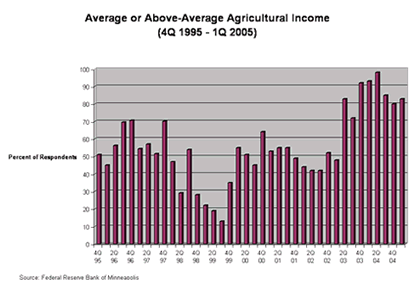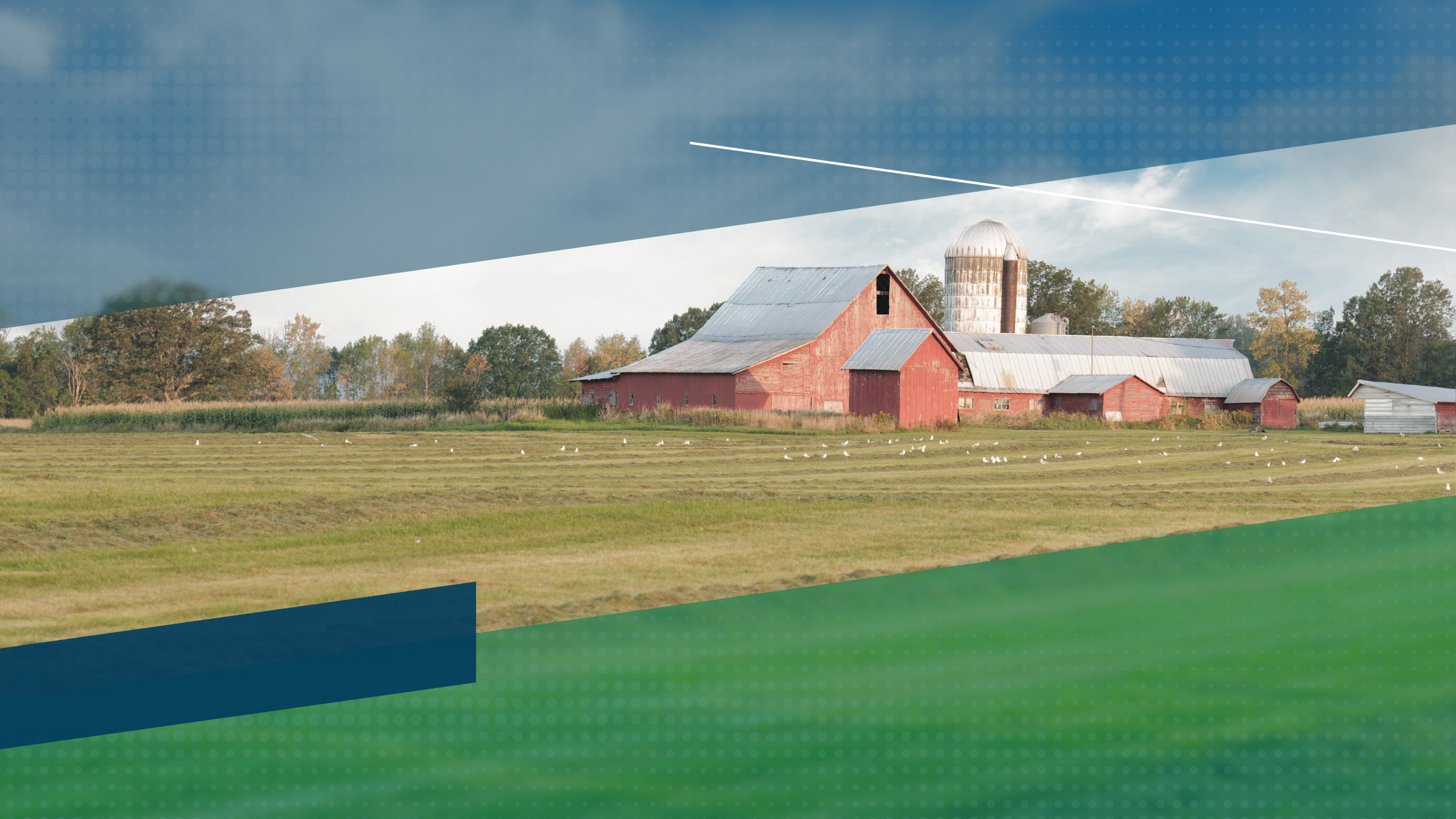Solid commodity prices buoyed agricultural financial conditions during the first quarter, according to the Minneapolis Fed?s first-quarter agricultural credit conditions survey. The strong prices pushed up profits and land values and spurred increased household spending, capital investment and demand for new loans. However, higher interest rates and input costs tempered respondent enthusiasm for financial conditions in the second quarter. Farm profits are expected to decrease, and most other financial indicators are expected to stabilize.
Farm income, farm household spending and capital investment
Farm income, household spending and capital investment all increased during the first quarter of 2005. Nearly half of the lenders reported higher farm income in the first quarter, while 17 percent of respondents indicated lower income. Due to strong dairy and cattle prices, respondents from western Wisconsin and Montana reported the strongest profit growth. Meanwhile, respondents from Minnesota were the most pessimistic, as 30 percent reported decreased profits in the first quarter. Household and capital spending followed the same pattern as profits; 45 percent revealed increased capital spending, and 42 percent reported additional household spending.

Loan repayments and renewals
Loan repayments increased slightly during the first quarter. Almost a quarter indicated an increase in repayments, and only 14 percent reported decreased loan paybacks. Meanwhile, 77 percent of respondents reported no change on loan renewals and extensions. However, a Minnesota lender noted that there were repayment problems for some customers that faced poor growing conditions in 2004.
Demand for loans, required collateral and interest rates
Loan demand increased during the first quarter. Thirty-nine percent of lenders reported increases, and 52 percent indicated no change. Higher interest rates may be holding down the growth in loan demand as more producers are paying cash for capital purchases, said a North Dakota lender. Interest rates increased during the first quarter, raising the cost of borrowing relative to the fourth quarter by about 50 basis points for variable loans and 20 basis points for fixed loans. Collateral requirements were stable, and only 1 percent of the respondents indicated that loans were refused due to a shortage of funds.
Land values
“Recent land auctions continue to indicate that land values are still continuing to rise due to farm programs, livestock profits and [outside] investor dollars,” commented a South Dakota lender. Ranch land values increased an average of 21 percent from the first quarter of 2004. Meanwhile, nonirrigated farmland values increased from a year ago by an average of 19 percent. The highest reported average increases were from lenders in South Dakota, who reported a 26 percent increase in nonirrigated farmland. (Note: Land prices can vary significantly, not only from state to state, but also from parcel to parcel. For more detailed information on agricultural prices, see the Minnesota Land Economics Web site.)
Outlook
“With substantial increases in fuel, fertilizer, land rent, interest rates and other crop input costs, 2005 may be a tough year,” commented a South Dakota agricultural lender. The outlook for farm profits is dreary, as a quarter of respondents expect decreases in farm income during the second quarter of 2005 and only 15 percent expect increases. The bleak profit outlook does not seem to affect the outlook for other financial measures. Most producers plan to have no change in capital and household spending. Bankers do not plan to change the amount of collateral required for loans and expect steady loan renewals and repayments. However, loan demand is expected to pick up, as nearly all the respondents expect increased or stable loan demand in the second quarter.
Appendices: State Fact Sheet | State Fact Sheet-Outlook





